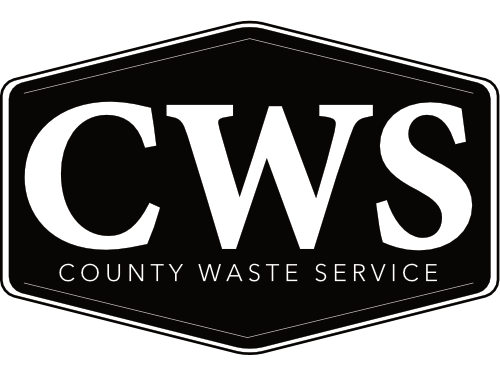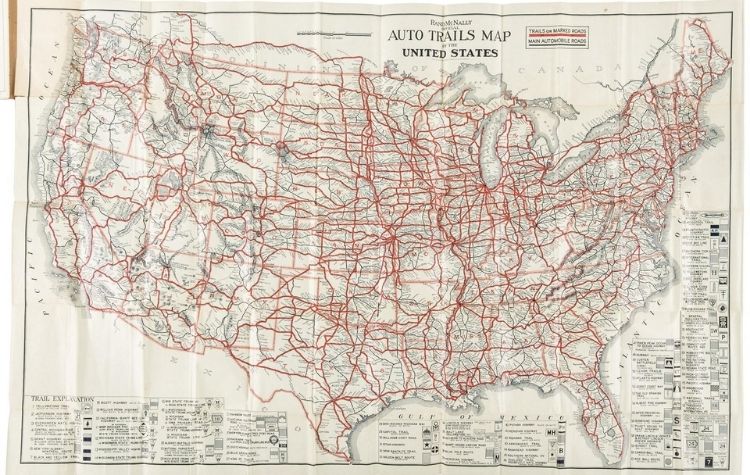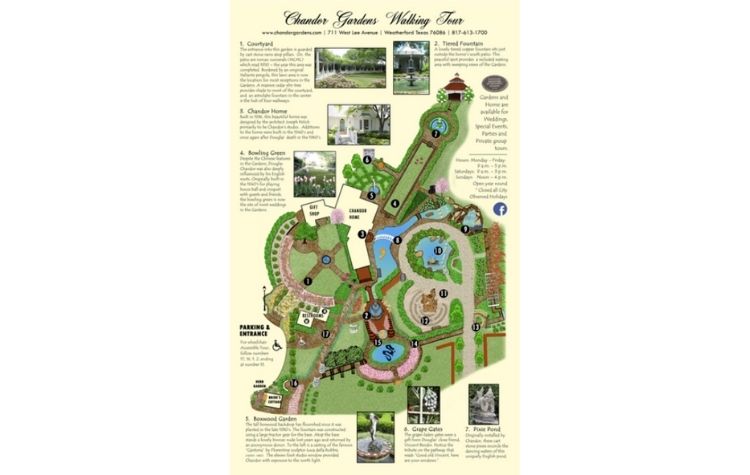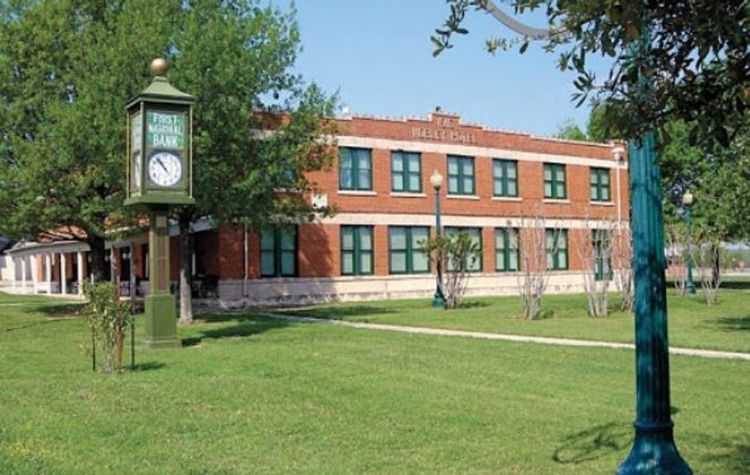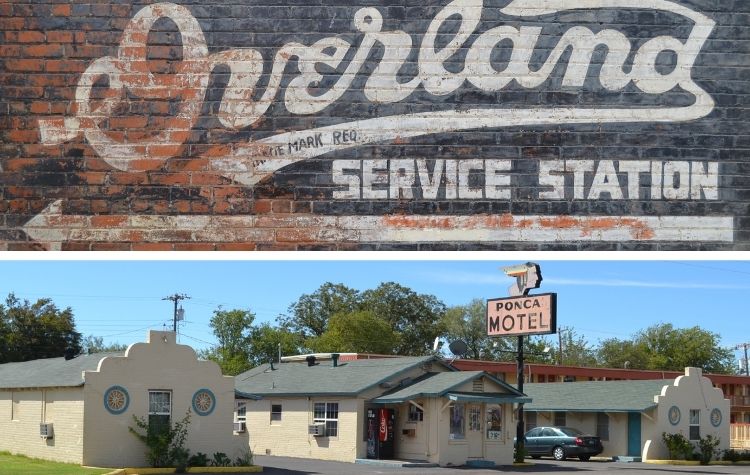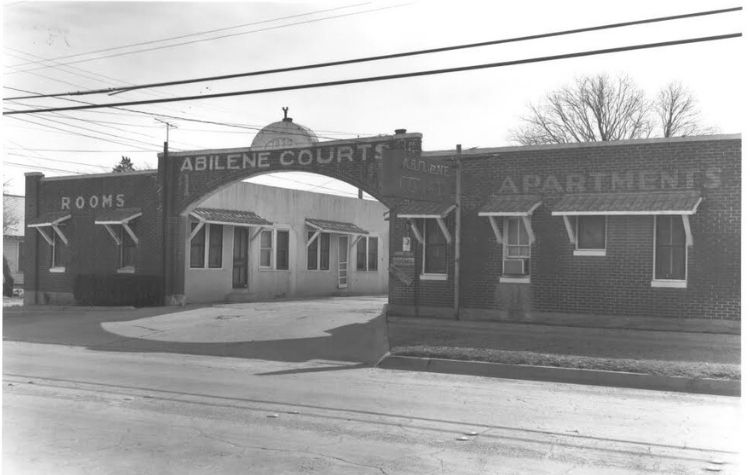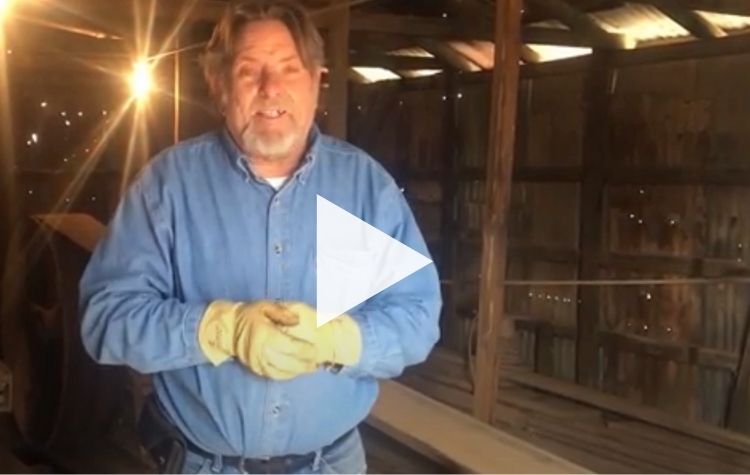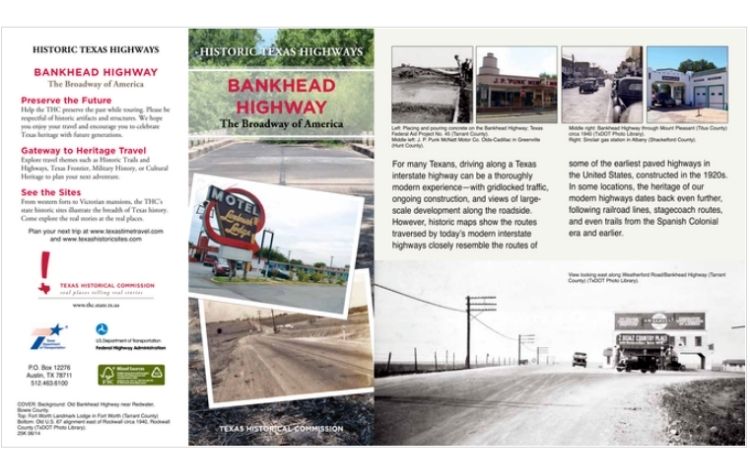Many of us love to gather up the kids and the family dog, grab a few snacks, and hop in the car to head out on the road. If the moment is merely a drive across town, we hardly give it a thought. We think very little, if at all, about driving to the next town. And even driving an hour or two on a road trip doesn’t get much thought. But turn back the pages of the calendar from the 2020s to the 1920s… Road trips then were a really really big deal! Back then, the idea of a road trip was new and novel.
In the 1920s the most popular car was the Ford Model T.
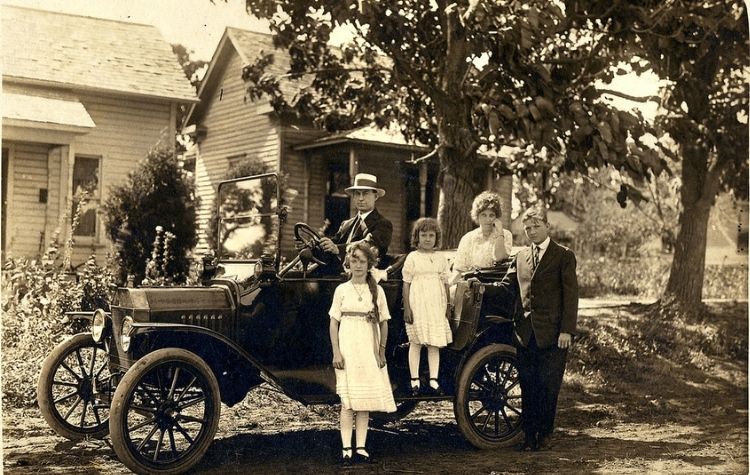
By this point in history, the average family could consider the prospect of owning a car. Roads that had been designed for travel on horseback or wagons were being replaced with roads for vehicles. These roads comprised what were known as the National Auto Trails (see the Auto Trails Map below). National Auto Trails was an informal network of routes in the United States and Canada. They were marked by colored bands wrapped around telephone poles. These colored bands were intended to help travelers along the trails in the early days. By the late 1920s, the auto trails were essentially replaced with the United States’ Numbered Highway System.
Trails for horses give way to highways for automobiles.
The United States designed the first cross-country highway that would connect Washington, D.C., and San Diego, California. And for the first time in history, the weekend trip became a reality for households in the newly mobilized society. For instance, a motorist driving a Model T could travel approximately 240 miles in a day. By comparison, a person on horseback could cover only one-tenth the distance – approximately 24 miles – in a day.
Communities were transformed as tourists began to explore the open road and discover new destinations. Gasoline service stations began to spring up along the way. Soon, restaurants and hotels appeared as well, catering to the newly born roadway adventurers.
The birth of the Bankhead Highway: the nation’s first transcontinental highway.
According to American Roads’ website, “The John H. Bankhead National Highway was one of the earliest American auto trails. It connects the nation’s capital, Washington, D.C., and San Diego, California, on the Pacific. The Bankhead Highway was an important transcontinental route. And its name still appears on many roads to this day.
“The Bankhead Highway was named for Good Roads promoter John Hollis Bankhead (1842-1920). Bankhead was a Confederate war hero, an Alabama state representative, and a state senator. Further, he was a ten-term member of the U.S. House of Representatives and, finally a U.S. Senator. While still a U.S. Representative, he introduced legislation to improve roads and other public works projects. Bankhead was chairman of the Senate Committee on Post Offices and Post Roads. Eventually, with his leadership, the Congress passed the Federal Aid Road Act of 1916.”
Travel the Bankhead Highway in our neck of the woods: Weatherford to Midland, Texas.
The Bankhead Highway was the second largest highway project (after the Lincoln Highway) undertaken in the early 20th century. Even though the highway had its name changed several times, many remember it as the “Route 66 of the South.”
Our focus highlights a stretch of the highway that all lies within a couple of hours of Abilene, from Weatherford to the east to Midland in the west, with a jaunt right through the heart of Abilene. If you want to rediscover some of the key points along the Bankhead Highway, take a day trip off of I-20 and travel into some of these towns along the way on old Highway 80. You will see remnants of many Bankhead-era buildings — a few still have operating businesses in them today. You’ll see bridges, gas stations, motels, hotels, car dealerships, and restaurants. In our highlights below, we’ve recommended some top-notch museums that will let you get a feel for what life was like in these parts from the turn of last century to the days when the Bankhead Highway was the cat’s meow for cross country travel.
A short video intro to the Bankhead highway.
Before we take a glimpse and glance at 8 historic spots along the Bankhead Highway in our corner of the world, enjoy this introduction to the Bankhead Highway from the Texas Historical Commission. The Texas portion of the highway ran 850 miles, stretching from Texarkana to El Paso. Check out their video here.
Bankhead Highway Travel Highlights from Weatherford to Midland.
WEATHERFORD, TEXAS
We start our journey down the Bankhead Highway in Weatherford, Texas. Here we will kick off our travels with two stops on the historical route, visiting The Doss Heritage and Cultural Center and the serene Chandor Gardens.
Doss Heritage and Culture Center
You will want to make your first stop in Parker County at the Doss Heritage Center. Parker County has a rich heritage of cowboys and cattle barons. With a visit to the Doss Heritage and Culture Center one will see “Broadway and television stars (featuring Mary Martin, aka Peter Pan, and Larry Hagman, aka J.R. Ewing), chuck wagons and stagecoaches shared and showcased in galleries that are truly awe-inspiring. They truly reflect all that is Parker County.”
The Doss Heritage Center often has special events for the community and travelers passing by. Check out their website to learn more.
Next, head on over to the Chandor Gardens in Weatherford. The gardens combine an unexpected blend of ancient Chinese architecture and the elegance of a formal English garden. Chandor Gardens is a 3.5-acre estate that leads its visitors on a meandering path of beauty and wonderment. From the 30 ft. man-made waterfall to the various soothing fountains, the garden has something new and exciting to offer at every turn. Click here to download the inside portion of the walking tour brochure as seen below.
MINERAL WELLS, TEXAS
The Famous Mineral Water Company aka The Crazy Company
Next stop on the Bankhead Highway is The Famous Mineral Water Company. According to the company’s website, the legend goes like this:
“Billy Wiggins, known as ‘Uncle,’ digs the “Crazy Well.” By the end of the year [1881], over 3,000 people are camping on the Lynch property buying water for 10 cents a glass full. Over the next several years, 125 more wells are drilled.”
“In late 1881, a woman who suffered from dementia would sit by the well all day drinking the mineral water. People slowly began to notice that the crazy old lady was not so crazy anymore. Had the water from the well alleviated the lady’s “crazies”? The well became known as the “Crazy Well” and thousands of people from all over the country flocked to this magical well, including a man named Ed Dismuke.”
In 1904, business man and mineral water advocate Ed Dismuke established The Famous Mineral Water Company sold and distributed – what else but – the local mineral water. Mr. Dismuke himself believed his ailing stomach was restored to health by drinking this mineral-rich water. Touting curatives with more anecdotes than scientific analysis, this turn of the century remedy spawned a bustling economy for the town.
Forty-Six Hotels
By 1909 the town of Mineral Wells had transformed from a small stop on the railroad line to a booming resort community boasting four bathing houses, seven wells and pavilions, two sanitariums, and forty-six hotels (see image below for the Crazy Hotel and the Baker Hotel) and boarding houses.
The “Crazy” company, now well into its second century, is still thriving, offering customers body products like soaps and lotions, souvenirs like totes, caps, and mugs, and, of course, bottles of local mineral water, all branded with the name of the source that started it all – an 1881 water supply dug by local “Uncle” Billy Wiggins called the “Crazy Well”!
The Baker Hotel
Also, if you head on over to downtown Mineral Wells, you will find the Baker Hotel (shown below, bottom/right). This fabulous 14-story Art Deco beauty was modeled after the Arlington Hotel in Hot Springs, Arkansas. To learn more about the history of Mineral Wells, jump over the Red River Historian’s website.
THURBER, TEXAS
The W. K. Gordon Center for Industrial History of Texas
As you continue west on what is today Interstate 20, you’ll come across Thurber, Texas. Thurber is a ghost town today. But 100 years ago, when the Bankhead Highway was connecting us coast to coast, Thurber was a center of industrialization populated with more than 10,000 residents. In the early 20th century Thurber was known for its coal production, brick manufacturing, and oil – the “liquid gold that would soon replace coal in almost every way.”
Today you can get a glimpse of the life in and around Thurber by visiting the W.K. Gordon Center for Industrial History of Texas, operated by Tarleton State University. The once-vibrant town of 10,000 is now home to five people.
CISCO, TEXAS
Next stop, The Conrad Hilton Center in Cisco. Conrad Hilton bought his first hotel, the 40-room Mobley Hotel in Cisco, Texas, in 1919, when a bank deal Hilton was set to purchase in Wichita fell through. The hotel did such brisk business that rooms changed hands as much as three times a day, and the dining room was converted into additional rooms to meet the demand. Hilton went on to buy and build hotels throughout Texas, including the high rise Dallas Hilton, opened in 1925; the Abilene Hilton in 1927; the Waco Hilton in 1928; and the El Paso Hilton in 1930.
The Conrad Hilton Center in Cisco is a multifaceted facility housing the Innkeeper Gallery, the Cisco Museum, the Walls of Fame, and the Cisco Pictorial. And don’t forget to check out the story of The Santa Claus Bank Robbery.
ABILENE, TEXAS
The Bankhead Highway could bring travelers into Abilene via a couple of different routes. This branching of auto trails through cities was common as the highway progressed from the Atlantic to the Pacific. The more northern route into Abilene brought folks from Mineral Wells and went through Breckenridge, Albany, and Hamby. The more southern route ran close to present day Interstate 20, seeing sites like the Overland Service Station and the Ponca Motel, a courtyard motor court (see photos below). Travelers along this southern route would pass through the towns of Ranger, Eastland, Cisco, Putnam, and Baird, instead of bypassing them as one does today traveling I-20.
Coming into the city, the Bankhead branched along today’s Highway 351 in the north, along today’s I-20 in the center of town, and along today’s Highway 36 in the south. The branches converged near the south end of downtown and continued west to Sweetwater on what is known as the old Highway 80.
Another Hilton Stop
Since your recent visit to Cisco took in the Conrad Hilton Center, you might want to make your first stop in Abilene the Windsor, formerly the Conrad Hilton Hotel. Located on Pine Street in historic downtown, the Windsor utilizes much of the space as apartments. In addition to living quarters, the former hotel hosts many weddings and special events. See the picture below of the lavish ballroom that surely hosted many a gala in the 1920s and ’30s.
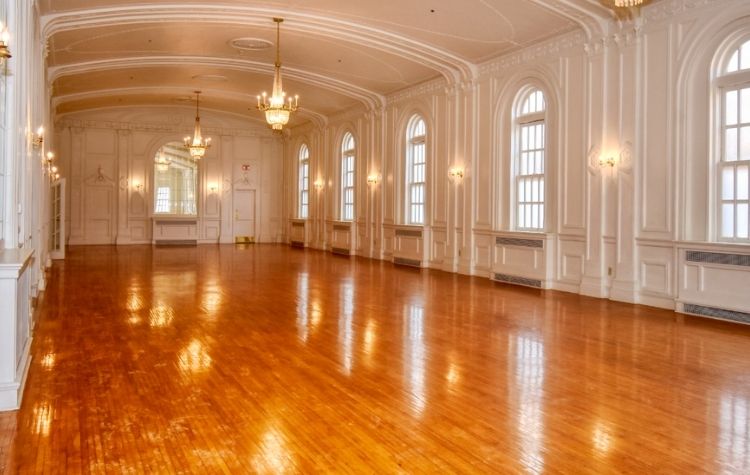
Photo Credit Windsor Facebook page.
Next on our way through Abilene, one of the famous stops on the southern branch of the Bankhead was the Abilene Courts, located on what is now South 11th Street. Just this past summer, the Abilene Preservation League initiated a project to save the facade of the Abilene Courts because of its significance as a stop on the Bankhead Highway. The Abilene Courts is a “rare example of a pre-World War II motor court.” To learn more about the progress of the Abilene Courts, including how you can get involved, visit the Abilene Preservation League’s Website.
BIG SPRING, TEXAS
Traveling west for more 1920s sites and surprises, we make a stop at the The Hotel Settles. A skyscraper in Big Spring? Yes, indeed. The 90-year-old Hotel Settles was built in 1930 by rancher W. R. Settles when he and his wife Lillian discovered oil on their ranch. At the time, the hotel’s claim to fame was being the tallest building between Fort Worth and El Paso. The Settles only owned the hotel for two years. In the early ’30s, the Great Depression devastated the nation and the revenues from the Settles’ oil diminished greatly.
The hotel was designed by Abilene architect David Castle as a solid concrete, 15-story, 150-room hotel with a restaurant and a pharmacy. Through the years, the lavish Art Deco facility brought festivities to the community with galas, bands, and even Elvis Presley. Treat yourself to this beautifully restored hotel along the historic Bankhead Highway. Listed on the National Register of Historic Places.

Photo credit Hotel Settles Facebook
MIDLAND, TEXAS
The last stop on our Bankhead tour is the Permian Basin Petroleum Museum in Midland. Midland boasts several attractions to fill your desire to learn some of the history that took place among the stops on the Bankhead Highway. One of the Midland highlights is the Permian Basin Petroleum Museum. The educational, interactive displays chronicle the oil boom in West Texas and give the museum viewer a first-rate experience. The Texas Historical Commission’s Texas Pecos Trail website points out these highlights: “The exhibition’s video even has an appearance by the late oil well firefighter and celebrity Red Adair (remember the movie about Red Adair that starred John Wayne?). Check out the video tour on the famous Santa Rita #2.
For mechanical enthusiasts there is the museum’s “Oil Patch,” an outdoor collection of historic oil field equipment, including steam, gas, and electric powered drilling rigs, a 119-foot steel production derrick from the 1930s, and an assortment of oil field tools such as drill bits and hard hats.
If you head out on a road trip to satisfy your need for old fashioned adventure, you may want to download this Bankhead Highway brochure (shown below) from the Texas Historical Commission. Take it along and let it guide you on your way.
Wherever your wanderings take you, we wish you Happy Motoring!
Bonus Section
If you want to plan a more extensive trip around Texas, plan your adventure using these links to the different regions of Texas from the Texas Time Travel Website.

